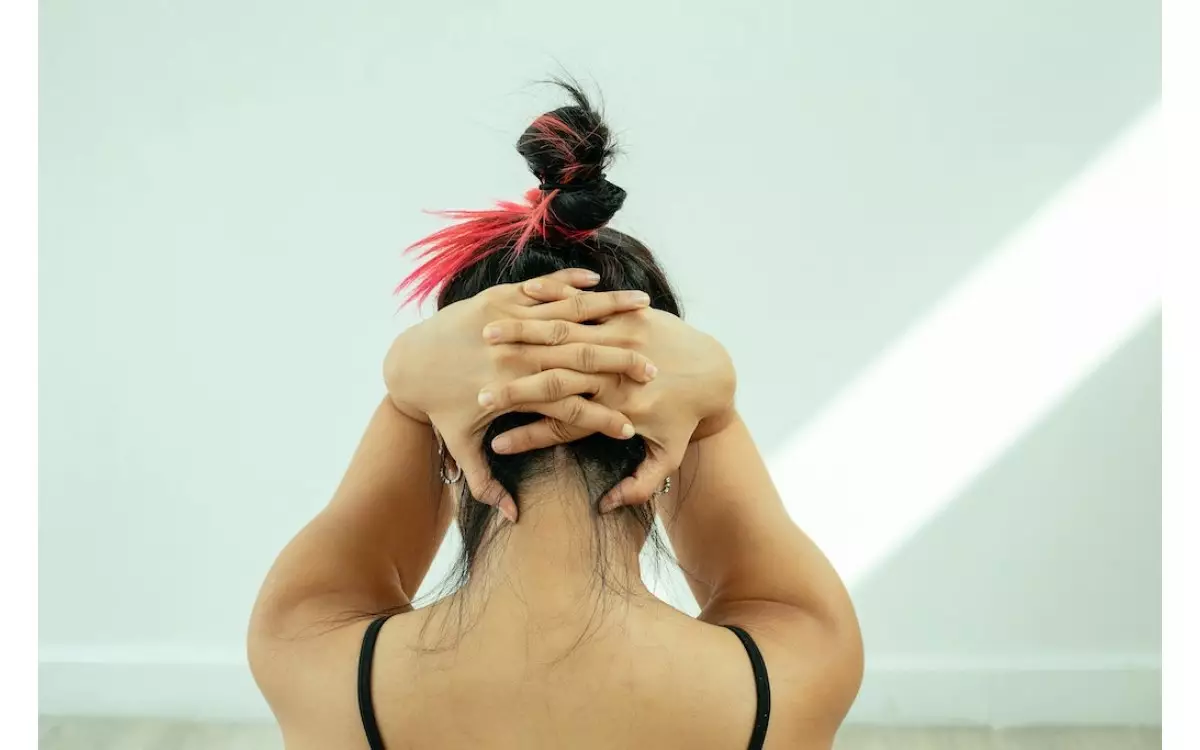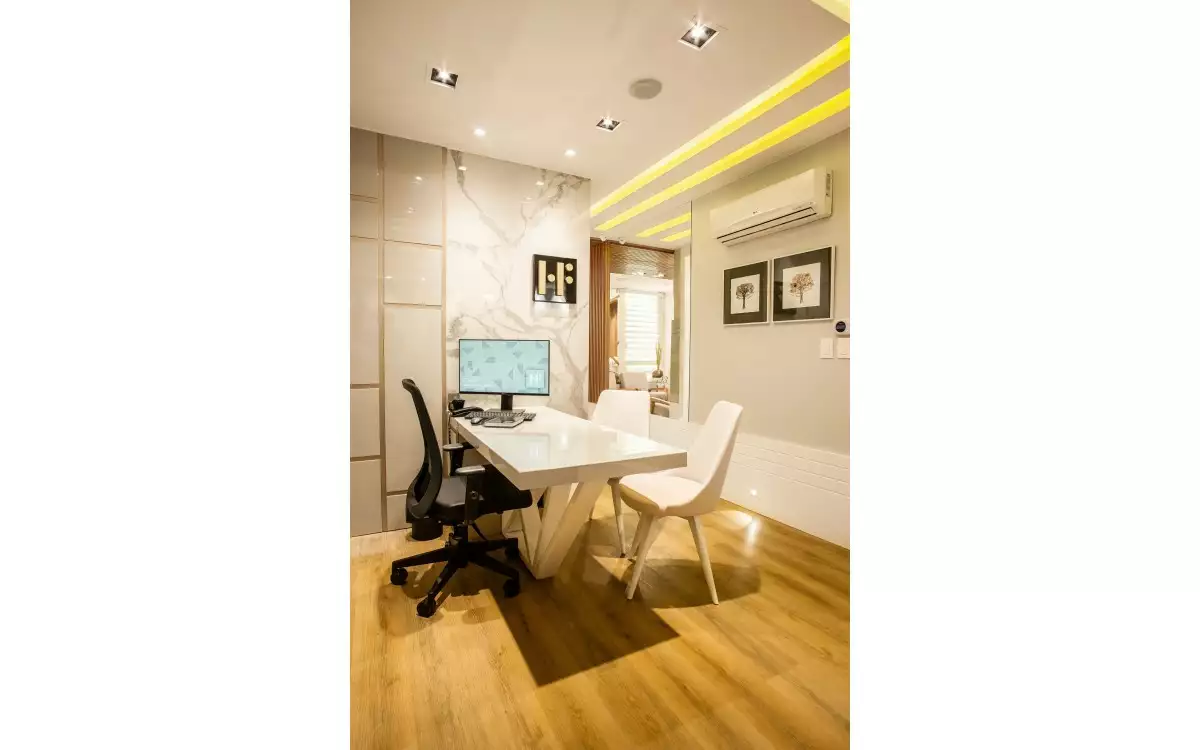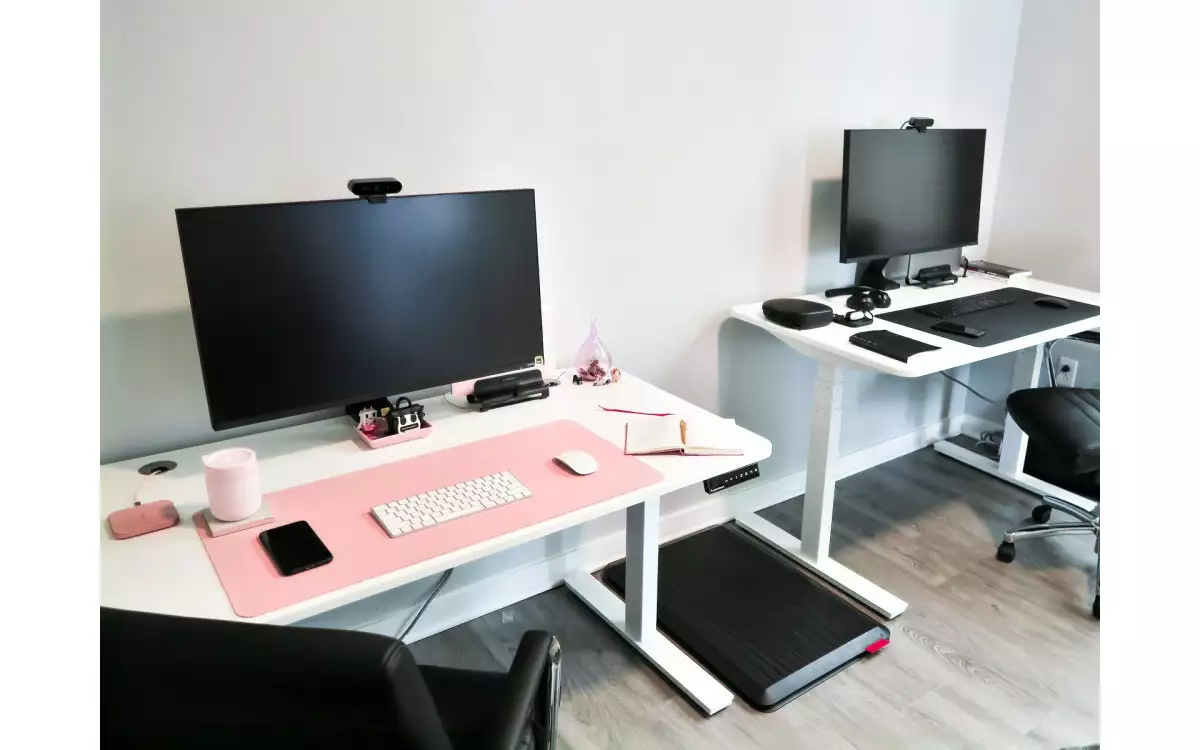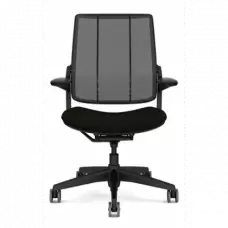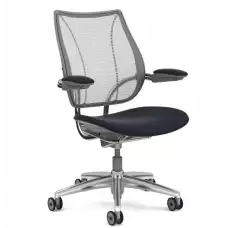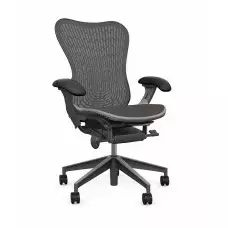Whether you're a student or an employee working in an office setting, it's no mystery that many of us develop back pain from all long hours of sitting. We all spend long hours at our desks staring at books, computer screens, and paperwork, and eventually, our backs get tender and sore.
If you regularly deal with back pain from your desk job or work studies, read through our article to learn about the different symptoms of back pain, what causes back pain, back pain relief, and ways to prevent future back pain.
Lower Back Pain: How Do I Know if My Back Pain Is Muscle or Spine?
Back pain and chronic pain is fairly obvious when it appears, but while you're working it can be difficult to recognize until it is time to adjust your position or take a break.
With the help of the Mayo Clinic, WebMD, and Spine-Health, here is a list of common symptoms to distinguish the type of back pain you have.
According to Spine Health, here are the symptoms of lower back pain:
- Pain that tends to be dull or achy: Most back pain gravitates toward the lower most part of your back, referred to as the lumbar spine region. The pain could range from making it difficult to move or walk, to as simple as just being tender and achy when moving around. At times it is possible that the pain can shift from just being in the lumbar spine and spinal column region and move to the upper thigh, hips, buttock area, and, sometimes, the groin area but usually never moves any lower than the knee.
- Sciatica and Sciatic Nerve Pain: If the pain lasts for weeks rather than days it can be possible that you have sciatica. Symptoms of sciatica nerve pain include leg pain on one side or buttock area rather than the lower back, with acute pain after long periods of standing or sitting.
- Muscle spasms: A muscle spasm happens when a muscle is constantly overused and can be additionally aggravated if the body is dehydrated (doesn't have enough water). Muscle spasms can form into tight knots that can be seen through the skin, or they can be painful twitches. Twitches are most common when it comes to back spasms and can be extremely painful and uncomfortable.
- Soreness to touch: This symptom is pretty self-explanatory and falls into the categories above as well. The soreness can range from being a very light pain to severe pain to the point where it becomes difficult to walk.
Why Is My Lower Back Hurting? Causes of Lower Back Pain
Although there are many different causes for back pain, these are the most common and least severe causes for back pain according to WebMD and the Mayo Clinic:
- Muscle or ligament strain: Strains can happen with repetitive motion, heavy lifting, or even just moving at a weird angle with quick speed. This happens more often in individuals who don't exercise regularly or are constantly lifting heavy objects due to their work.
- Arthritis: Over time, repetitive slouching positions or just regular strain on the back can cause the muscles and bones to weaken causing back pain to become more regular and intense.
- Skeletal irregularities: Back pain can occur when the spine begins to curve abnormally - the most common form of this is scoliosis.
- Your bag: Your lower back supports ALL of your upper body, therefore if your bag is heavy, your back strains, even if you're just wearing it on one shoulder.
- Your workout: Make sure you are doing all of your exercises correctly! Do not over-exert yourself while you are at the gym, especially if you only go to the gym sporadically and not daily.
- Posture: When someone tells you to "stand up straight," it's not just to be polite, it's to help your back. Poor posture can cause back pain and make chronic pain worse. The back is better supported when it is straight rather than slouched, which is difficult, of course, when working countless hours bent over a desk, book, or computer.
Back Pain Treatment at Home: How to Fix Lower Back Pain
This can all sound a bit scary, especially when all of these causes can happen daily. However, preventing back pain is almost as easy as getting back pain.
Should I sit or lie down with lower back pain?
Many people will ask if it is better to lay in bed rather than stay active when they're feeling lower back pain. The answer is NO. Many physicians say it is better to stay as active as you possibly can without putting extra strain on your back. So, get out of bed, take a lap around the house, take a shower or a bath, sit down and watch some television or read a book, but always remember to walk around every once in a while to ensure that your muscles are getting worked out and not losing their flexibility or tone.
Home Remedies and Treatments
Sometimes it is best to step back and take some time to yourself. Take a day off work or school if possible and relax at home.
Get a heating pad and set yourself up on the couch, sitting straight up with good posture, and watch some television while getting up every hour or so to walk around. Along with that, taking a really warm bath with some Epsom salt will help to loosen up the muscles in your back and really help you to relax.
A lot of the time stress can add to your back pain, so taking the time to self-care can really help to alleviate some of the pain felt in your lumbar region. Yoga is a great way to keep active and stretch out your spine as well, there are many books and classes available and it is highly recommended by most physicians specializing in the health of your spine.
Chiropractor or Massage
This can fall under the self-care category as well as just regular prevention for your lower back pain.
Going to a chiropractor or a masseuse allows your muscles to be worked out of the knots caused by stress and poor posture, as well as realigning your spine. Realigning your spine allows your back to be relieved of stress caused by a skeletal irregularity.
A normal spine curves ever so slightly towards the middle of your back as shown to the right, however when spending hours hunched over or not walking in the proper position, at times your spine can begin to curve irregularly to accommodate for the positions you naturally put yourself into.
Lumbar Support
When working for hours on homework or what is required from you at your office, it gets difficult to sit in a proper sitting position.
Our body naturally tends to slouch or hunch when we are working in a chair, therefore it's better for you and for your back to get a chair that has great lower back support, armrests, and is able to swivel around. One of the best chairs built for overall back support is the Herman Miller Aeron.
Our used Herman Miller Aeron chairs are completely and totally ergonomically friendly. However, if you're using any other type of chair, putting a pillow against your lower back helps to naturally curve your spine the way it is supposed to, and it's important to remember to stand up and stretch your spine out every half hour to hour.
Lifting
If your job requires you to do heavy lifting, it is important that you lift properly to prevent muscle strain.
Lifting properly requires muscle strength and proper posture. Squat so that you are almost level with the box, wrap your arms comfortably around the box, and once you begin to stand to lift with your knees and glute muscles instead of your back.
For extra support, there are multiple back supports that wrap around your lower back and waist to give your back that extra help it needs when lifting heavy objects.
Correcting Poor Posture
When standing or walking around the office, it is important to make sure you are maintaining good posture and to have ergonomic chairs.
Assume a natural pelvic position, this will feel awkward because our body does not naturally stand like this, your pelvis will be slightly pushed forward allowing your shoulders and back to be completely straight. If you so choose to, there are adjustable standing desks available that are height adjustable so that you can alternate between sitting at your desk, or standing at your desk.
Alternating positions is great for your lower back and relieving that stress from the lumbar region. Just be sure that if you are standing for a long period of time that you utilize a foot stool. Allow yourself to lift one foot on the stool to relieve some pressure from one side of your back, and then alternate every half hour or so, so as not to aggravate one side more than the other.
What Is the Best Muscle Relaxer for Back Pain?
A muscle relaxant or pain reliever can be a good source to dull some of the pain signals felt in your lumbar region. It is suggested that you start with something like Aleve, or Ibuprofen, or some other anti-inflammatory type of pain reliever before going to something stronger.
Taking these pills can help temporarily with lower back pain, however it is not a good idea to keep taking these long term as it can start to affect other areas of your body such as the liver.
*As a side note, please be aware that even though some products such as shoes and pillows will say they are built to relieve lower back pressure, you should not solely rely on those materials for the health of your spine. There is no supportive evidence in those products, the only tried and true evidence to help lower back pain, are the suggestions provided above*
How Do I Strengthen My Lower Back? Back Pain Exercises and Lower Back Stretches
While prevention has been provided, exercise is one of the most important ways to alleviate and prevent lower back pain.
Listed below are a few exercises you can do at home, at the office, in between classes, or at your desk doing homework; it takes less than five minutes to do all of these exercises, but you don't have to do them all in order to stretch your back. Do them all if you feel it is necessary, or feels better, or just pick and choose which exercises feel the best or only have a limited amount of time to do them.
Whichever the case is, exercising your back will make you feel lightyears better than if you omit them.
What Is the Best Exercise for Lower Back Pain?
Knee to chest Back Stretch
This stretch might be easier to do at home, however it's one of the most effective stretches for your lower back. While laying on the floor, bend your knees up, and then pull one knee up to your chest and hold for ten seconds, release your knee and then pull up the other knee and hold it for ten seconds, release your knee and then pull up both knees to your chest and hold it for fifteen seconds, repeat three times.
Lower back rotation
This back stretch might also be easier to do at home and is also one of the more effective stretches.
You also need to be laying on the floor for this stretch, bend your knees up again, and then slowly roll both knees to one side and hold it for fifteen seconds, rotate your knees back to center, and then roll both knees to the opposite side and hold the stretch for fifteen seconds, repeat three times.
If you aren't feeling the stretch, or would like to feel more of a stretch, it is okay to press your knees down with your arm and pull your hips the opposite direction of your knees.
Cat stretch
This stretch allows for an anterior pelvic tilt and can be done on the floor, or standing.
This cat stretch can be a little awkward the first few times you do it, but your back will greatly thank you if you continue to do it.
On the floor, get on all fours, then roll your back upwards toward the ceiling and hold the stretch for ten seconds, then slowly curl your back inwards so that your back is arching, and you are looking at the ceiling, hold this stretch for ten seconds, repeat three times.
If you are standing (this is probably the most awkward one) stand with your legs shoulder width apart, place your hands on your inner thighs, start by curling your back inwards, arching your back and staring at the ceiling, hold it for ten seconds, then curl your back up and pull on your inner thigh to get that extra stretch in your lower back and shoulders, hold for ten seconds, repeat three times.
Seated rotational back stretch
This exercise is perfect if you're in the office, or at school. You need to be seated for this exercise and you will probably find yourself doing this stretch or something similar all throughout the day if you don't already.
While seated, cross your legs, then with the opposite arm push against your leg and twist your body so that your back stretches, hold for fifteen seconds, then switch legs and arms and twist again, hold for fifteen seconds, repeat one to two more times. Be careful with this stretch though, it is easy to over-stretch your back with this exercise and you definitely don't want to do that.
Shoulder blade squeeze
This exercise is also perfect if you're in the office or at school and, chances are, you probably already do this exercise multiple times a day.
It's pretty self explanatory and can be done while you're sitting or standing. Whichever way you prefer, all you do is pull your shoulders back and arch your back inwards. You will feel the stretch in your upper back and shoulders, and if you are seated you will feel an additional stretch in your lower back as well.
These are just a few ways to acknowledge your lower back pain and to aid in alleviating the stress on your lower back. While these are recommended by most physicians, if your lower back pain feels more severe than you believe is normal among those who feel lower back plain, please go see your doctor to have them help to diagnose you.


